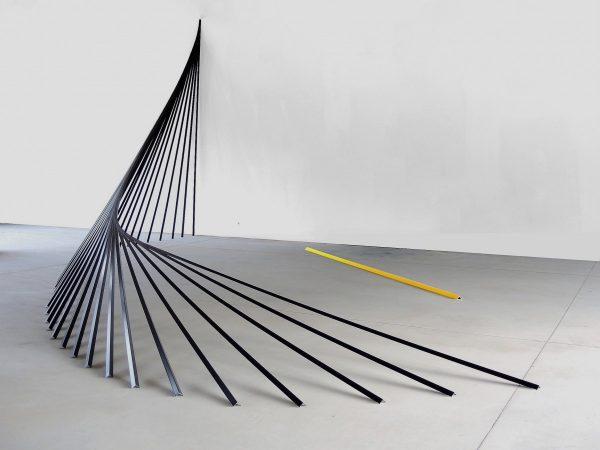Matter Matters
“The shapes, the unity, projection, order and color are specific, aggressive and powerful”
– Donald Judd, Specific Objects, 1965
The Flat – Massimo Carasi is pleased to present Matter Matters, the next group exhibition that will be set during miart and Salone del mobile and will feature four Italian and international artists whose work is linked by the attitude of making a precise and original reflection on forms and materials. By adopting some particular forms and, as a consequence, shaping surfaces as well, the artists dialogue with different voices which form a scratchy and aesthetically fascinating choir of artworks, where “matter matters” as well, showing off its qualities. The artworks on show speak to the beholder, sometimes literally, showing themselves present and alive even where the material has an autonomous strength that overlaps with theoretical and conceptual assumes.
In 1965 Donald Judd wrote Specific Objects for ArtsYearBook, in which he highlighted the newborn Minimalist movement by sustaining painting and sculpture as signifying media for themselves, thus declaring useless the adherence of many artworks to a communicating context. We are not saying the artists on show are actually “Minimal”, nevertheless it looks evident that Fabio Lattanzi Antinori, Jonny Niesche, Leonardo Ulian and Jonathan Vivacqua are the heirs of Judd’s vision, which found its basis on the interdependence between matter and form.
Fabio Lattanzi Antinori’s sculptures (b. Rome, 1971) are devices that transmit volatile, mysterious and cryptic messages through the conversion of financial and economic data into impulses that directly engage the spectator. The artist examine our economic society through emblematic cases from our history as the Lehman Brothers’ one, or by real time hints taken from the financial world, which seem submerged and ridiculous yet it accompany our society as a basso continuo.
Jonny Niesche’s (b. Sidney, 1972) voile canvasses extend themselves as screens crossed just by its framework, which represents not only a physic sustain but, also, an aesthetic conductor more than just a concrete element. We look at the canvas and its warm shades imaging a sunset, but at the end we can just stop and stare in front of the canvas itself, which is surface and empty space, where the beholder can sink into, and lose himself as in James Turrell’s environments.
Leonardo Ulian (b. Gorizia, 1974) is presenting for this occasion new artworks inspired by his previous Mandalas series. The use of sand, in particular, reflects the holy aspect of this process that refers to the Tibetan monks’ well-known tradition, and contrasts with the surface made of lead sheets sewed together. The comparison between these two media is flattered on a bidimensional support which synthesizes a clear, mystic and tidy unity, as Ulian’s artworks are used to be.
Jonathan Vivacqua’s (b. Erba, 1986) big installations are the most close to Judd’s concept of Specific Objects. Long steel foils and caoutchouc tubes are take by the artist right from the place of production and use and bring to the exposition area. There’s nothing else than form and matter. Nevertheless, the artworks still pull the beholder into their own dimension, which becomes a natural extension, and so sincere, of the very basic form of the space in which they are surrounded.













